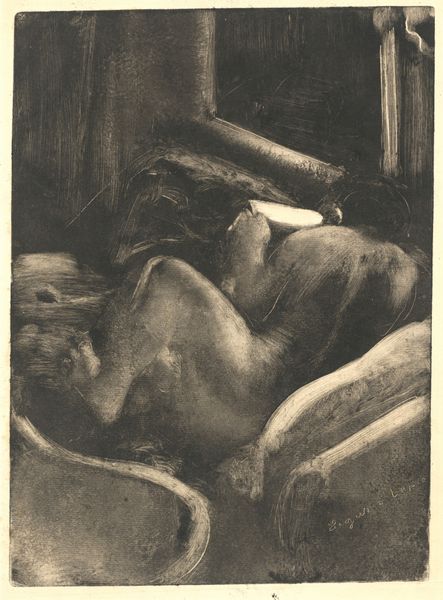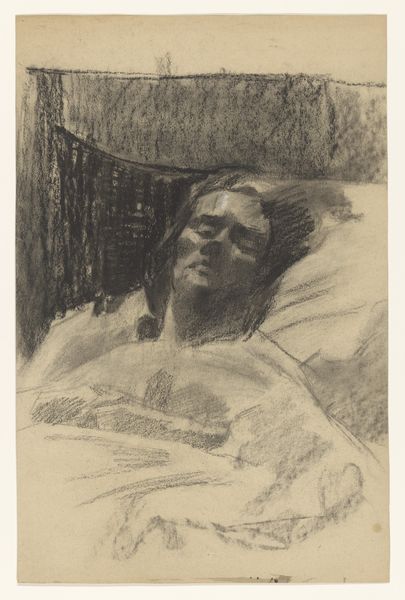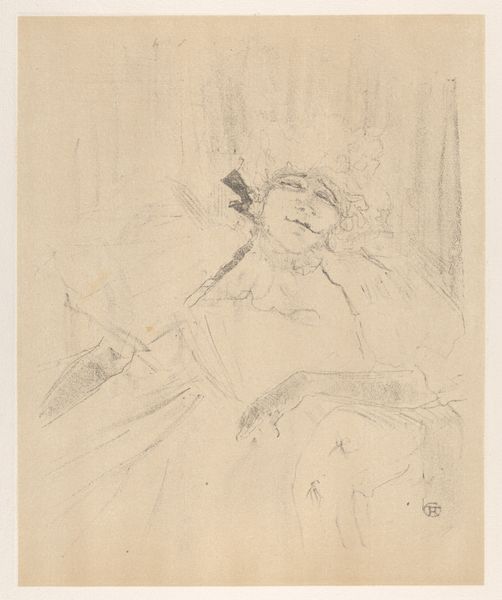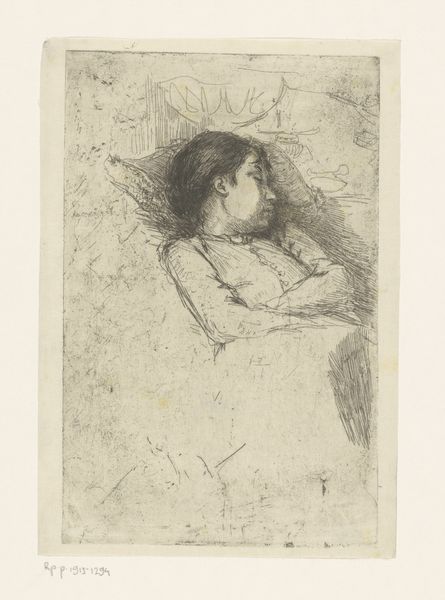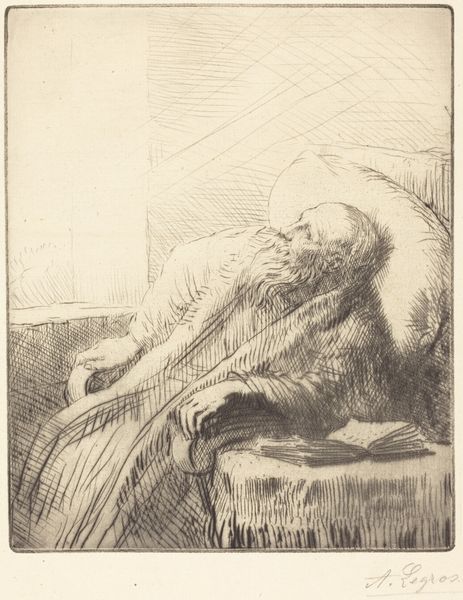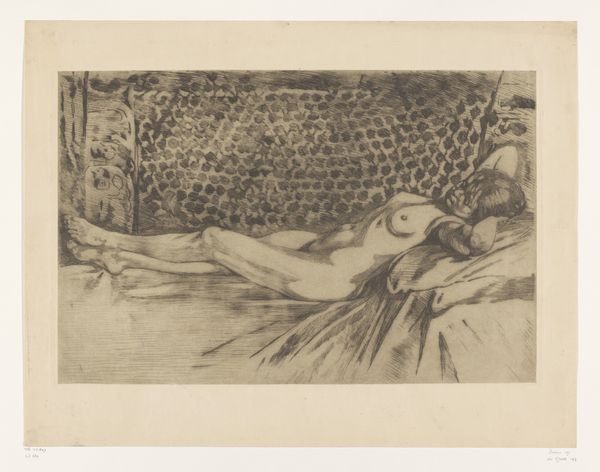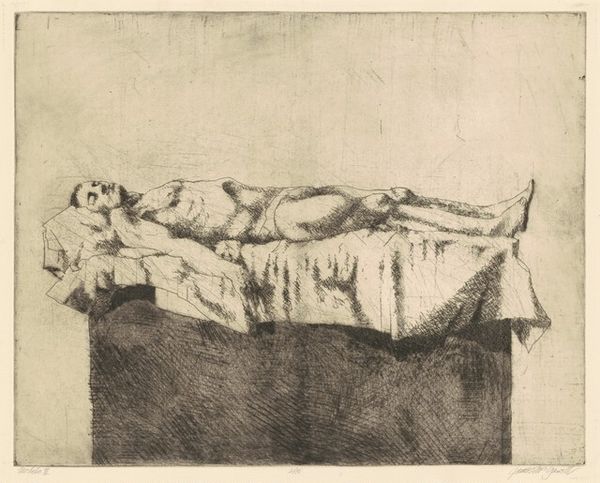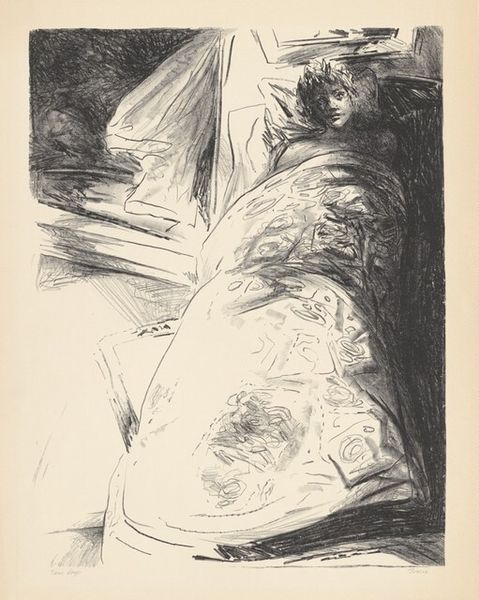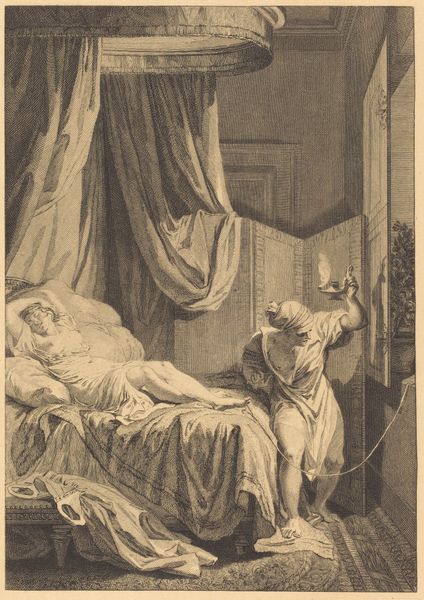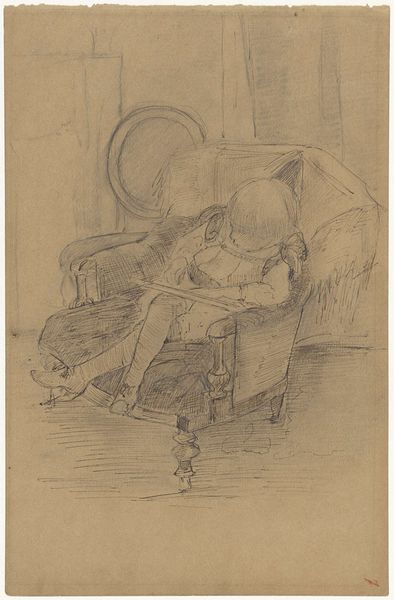
drawing, charcoal
#
drawing
#
narrative-art
#
charcoal drawing
#
genre-painting
#
charcoal
Copyright: Public domain
Curator: Here we have "Illustration för Selma Lagerlöf, Gösta Berlings Saga" by Georg Pauli, created using charcoal. It depicts a poignant scene, doesn’t it? Editor: Indeed. My first impression is of overwhelming sadness. The figures are shrouded in a muted palette; it feels very intimate, almost like a somber stage set. The grain of the charcoal adds texture, enhancing that feeling. Curator: Pauli, though trained in academic painting, embraced illustration, a somewhat democratizing move. This piece reflects the late 19th-century cultural movement that sought to elevate folk tales and national identity through art and literature. Selma Lagerlöf was the first woman to win the Nobel Prize in Literature. This illustration connects art directly to significant social and literary narratives. Editor: It's fascinating how the visible mark-making, the smudging and hatching in the charcoal, really conveys the raw emotion of the scene. It moves the piece away from strict academic finish into something more expressive and immediate, underscoring the physical labour of creation. It almost looks rushed or frantic, but intentionally. Curator: Absolutely. The setting itself tells a story, doesn’t it? A humble bedside, attended by worried figures. Genre scenes like this brought everyday realities into art, engaging the public on an emotional level, particularly as mass-produced illustrations became more widespread. It invited a direct response. Editor: You’re right, and charcoal as a medium made art more accessible – cheaper than oils. Also, I can't ignore the narrative implications of this being an illustration; it’s specifically made for reproduction. So this intimate scene is designed for a mass audience, prompting reflection. Curator: It encapsulates a moment of reflection within the grand scope of a literary classic, bringing high art to a broader audience through illustration. It certainly shows art's role in building and spreading cultural narratives. Editor: Definitely, seeing how Pauli used relatively inexpensive materials, mass distribution, and potent emotional resonance allows one to appreciate art as a tool, making poignant subject matter like this very approachable. Curator: I agree. It emphasizes art's capacity to connect with the masses through story-telling, capturing those delicate human moments that connect with audiences and the socio-political forces shaping art. Editor: Exactly. It gives me a better understanding of what goes into crafting narratives, and it is much more profound and tactile, given my understanding of materials used in making the artwork.
Comments
No comments
Be the first to comment and join the conversation on the ultimate creative platform.
